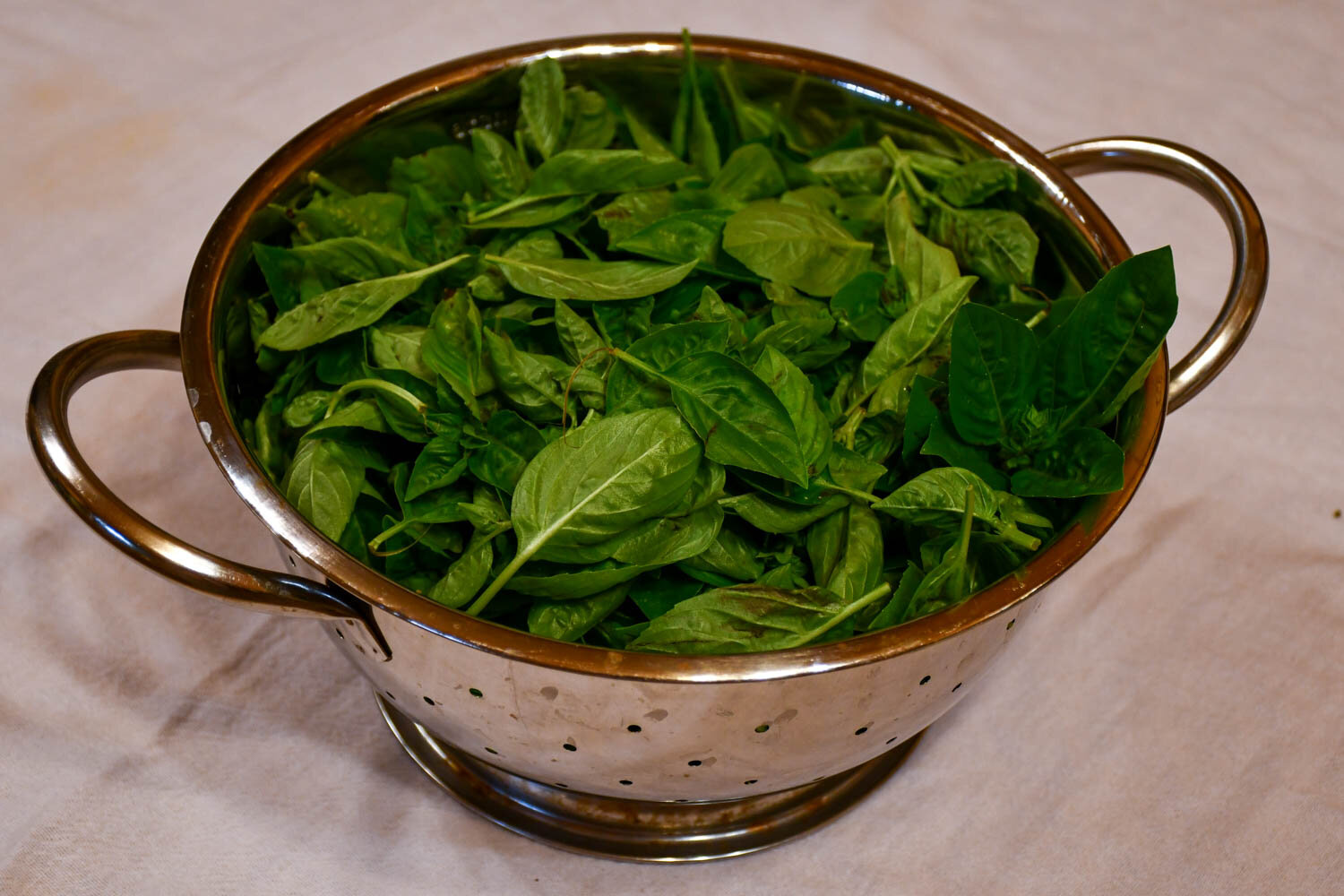Most of our summer garden is winding down due to the insufferable heat and lack of rain. But, the basil has been growing gangbusters through it. Karen and I have been making pesto this summer with an abundance of foliage from cultivars like ‘Dolce Fresca’ and ‘Aroma 2’. It is delicious for dips with pita chips or Italian bread, as a sauce in paninis, and as a melt-in-your-mouth topping on grilled steak. Of course, the question is how do you capture this essence of summer? We prefer to freeze it for use later in the year.
Basil, wet from the morning dew. Cutting it frequently for pesto results in plants that are more bushy. Even if it gets out of hand and flowers, don’t be afraid to cut it back hard.
I use the New York Times recipe and have copied and pasted it below for your convenience along with some helpful notes. The big difference from their recipe is how I store it frozen.
INGREDIENTS
2 cups fresh basil leaves (no stems)
2 tablespoons pine nuts or walnuts
2 large cloves garlic
½ cup extra-virgin olive oil
½ cup freshly grated parmesan cheese
Basil cut and brought in from the garden. I try to get it before flowering, but even if the plant has bloomed, leaves can still be used. I prefer to process it soon after cutting. I’ve placed it in the fridge before, but it developed black spots on the leaves from the cold temperature.
I rip the leaves off the cut stems. Usually, lower leaves have some blemishes and yellowing on them, so I don’t use those. Also, in the process of riping leaves off the stems, some will be bruised and turn a little dark.
I put the leaves through two or three washes of water in the sink, and dry them off. Next, I process them through the food processor. After running the food processor, I always find that some leaf petioles and plant roughage is left on top, and I scrape that off the blade. Next, I put in the garlic, walnuts, olive oil, and cheese. I then transfer it to a cookie sheet or 9 × 13 pan for freezing.
The final product after running everything through the food processor and spreading it out on a cookie sheet with parchment paper. This batch is from six cups of basil or triple the above recipe.
And, this step is where my recipe deviates a bit from the New York Times because I freeze the basil in sheets and then cut it or break it up. I find that trying to get it in ice cubes is cumbersome, and this process is fast and easy. I freeze the pesto in the freezer over night and cut it the next morning. Then, when we need it, we can pull out the perfect amounts and heat it up. Having it cut into similar-sized shapes helps us gauge how much we need for recipes.
Voilà! Pesto brownies! Now, we can easily choose how much of a portion to make.
So, with all that basil you have left in your garden, consider making some pesto with it. No matter the time of year, pesto is a flavorful addition to many dishes, and freezing extends the enjoyment of the harvest.




